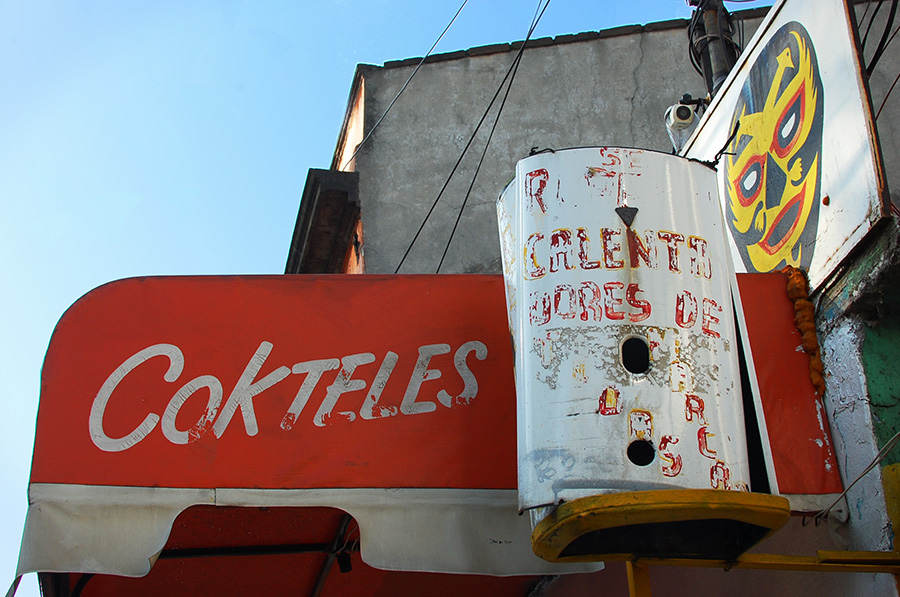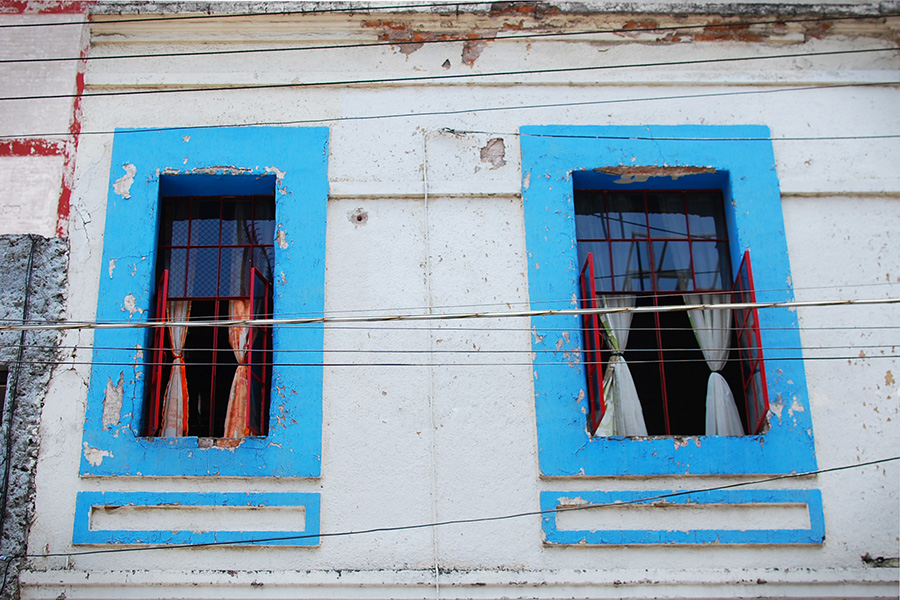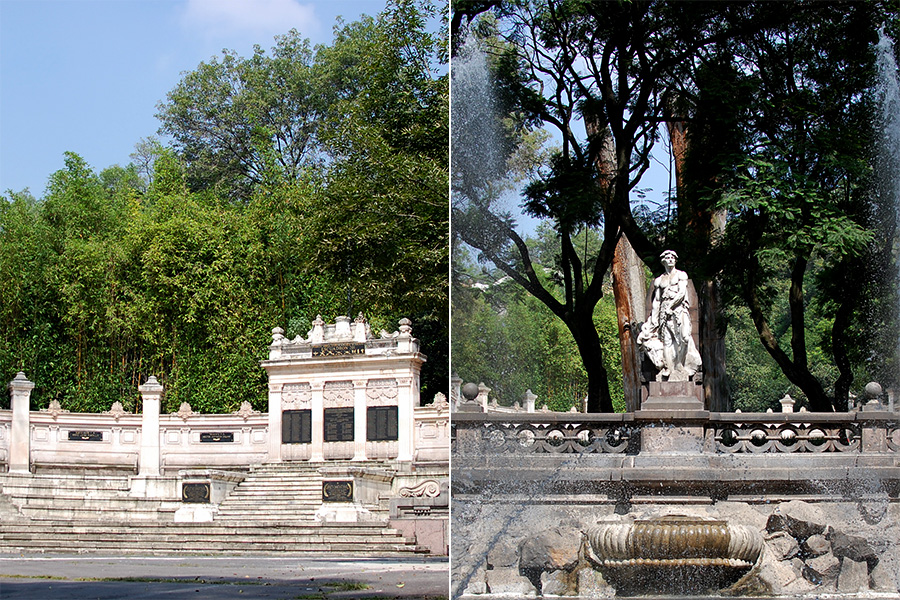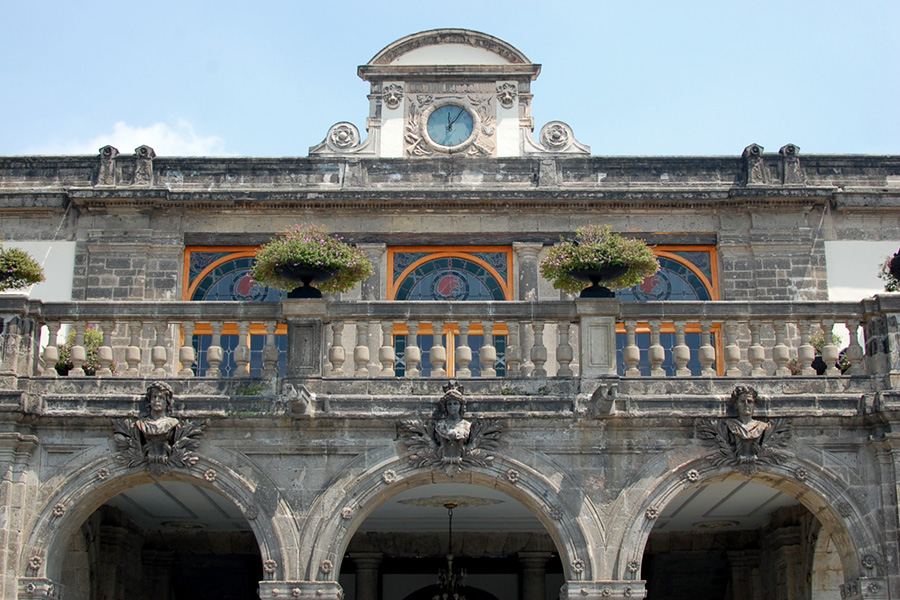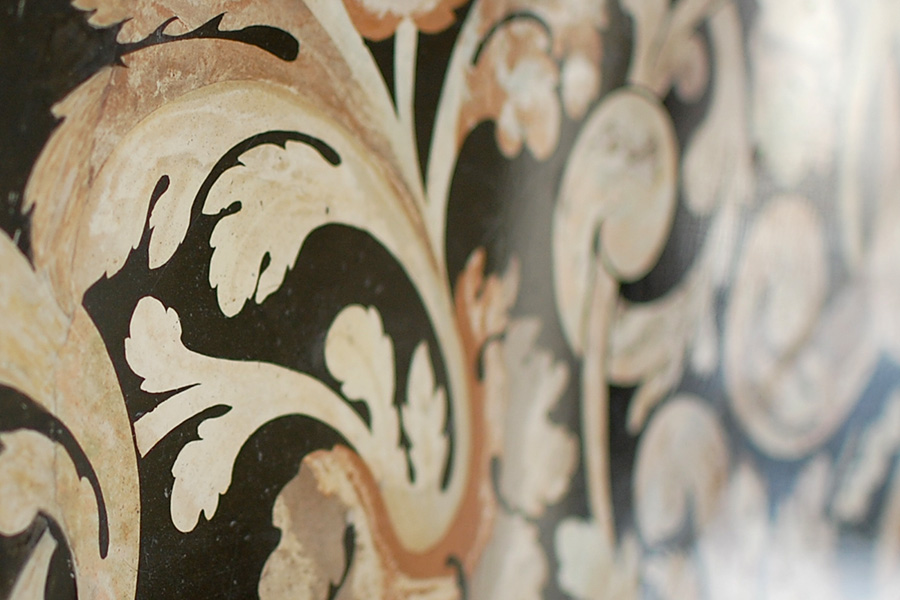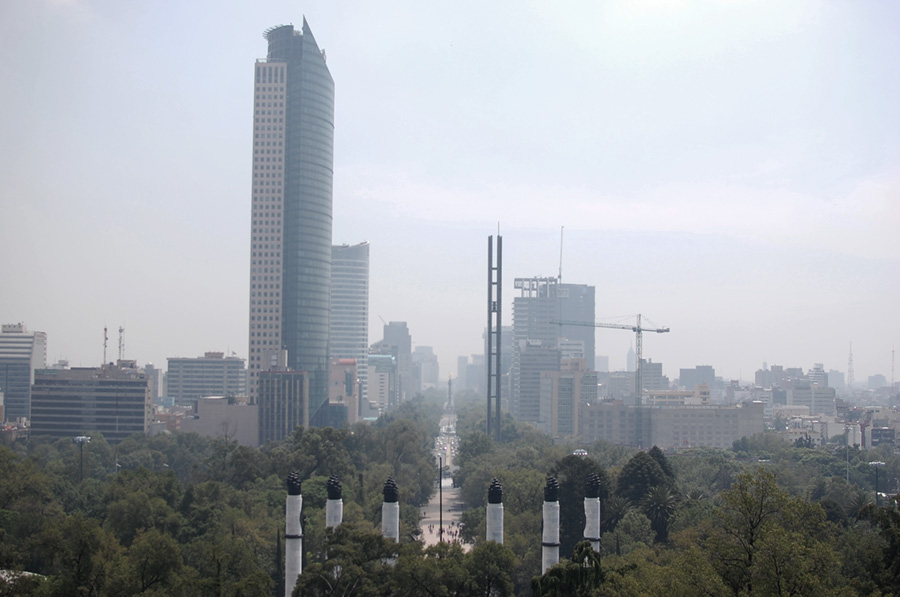Mexico City: Xochimilco
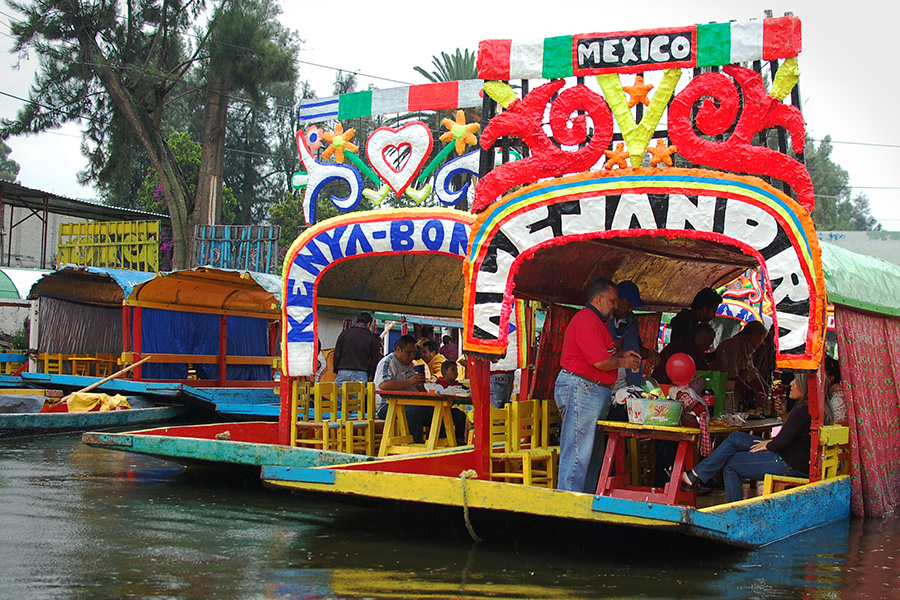
The “trajineras” floating on the canals of Xochimilco
As we started researching Mexico City a couple weeks ago, Nik’s dad sent us a photo of the Island of Dolls. The man made island, or chinampa, sits in the middle of an extensive 110 mile canal system in Xochimilco, and stuffed animals and dolls are hanging from nearly every tree. The dolls were hung by the owner of the island as a way to prevent evil spirits from entering, and now that he has passed away it is being exploited by his family as a tourist destination. As soon as we saw the photo, we knew we had to go. It looked creepy and incredible.
At one of our first dinners here, we brought up the Island of Dolls to our local friend, F, and Nik’s co-worker, B. F and B both laughed at the fact that we wanted to go, but also agreed that it would be an experience we could never get anywhere else. F gave us a little more background of the island, and told us that the only way to see it was by “trajinera” – canoe. We said, “Okay, even better. When can we go?”
On Saturday morning, we met in the hotel lobby with umbrellas in hand and began our journey. Traffic was outrageous, and the 20 minute drive took a good hour. When we arrived in Xochimilco, H (our driver) walked into the play-land-like amusement area and found an old friend of his that runs a fleet of trajineras. The Island of the Dolls turns out to be a four hour trip from where we were. F wasn’t fond of being on the boats for more than an hour. B was hesitant to commit to four full hours. Nik and I probably would have gone for it if it was just us, but after seeing how cool the boats were, we agreed that four hours might be a little much.
While we loitered six men in traditional celebration attire started dancing around a tall white pole while one played a flute/drum. Intrigued, we stood and watched the Danza de los Voladores (Dance of the Flyers). After the dance, five of the men climbed the pole and tied themselves to the center with thick yellow ropes. Once the ropes were coiled correctly, the flutist/drummer began playing again, and the other four leaned back and released themselves from the platform. As the top turned, the men flew through the air towards the ground and it was beautiful.

Danza de los Voladores – Dance of the Flyers
Afterwards, it started to rain and we made our way to the boats. There were over a hundred boats painted in red, blue and neon colors at the dock lined up in a row. We climbed through four or five to finally settle into the one in front, and a lady dropped off a bucket of beverages including coke, beer, and water. We paid her for the bottles we opened at the end of our journey, and she took the rest back to her cooler to wait for the next customers.

Row row row this boat
The trajeneras are propelled and steered by a man standing on the back of the boat holding a long bamboo pole. Each one is a thirty feet long and eight feet wide flat barge with a slanted front and back. The center area is flat and covered with a curved metal roof over a long wooden table and up to twenty small wooden chairs. The sides behind the chairs are protected with a long fabric curtain to block the rain or for privacy.

Boat ready for the next party
After we left the dock, we were in grid-lock boat traffic, but it didn’t matter. Most trajeneras were filled with large groups that had brought their own picnic lunches, and I was jealous. All we had was a bucket of warm beer…next time I will be packing a lunch with all the fixings!
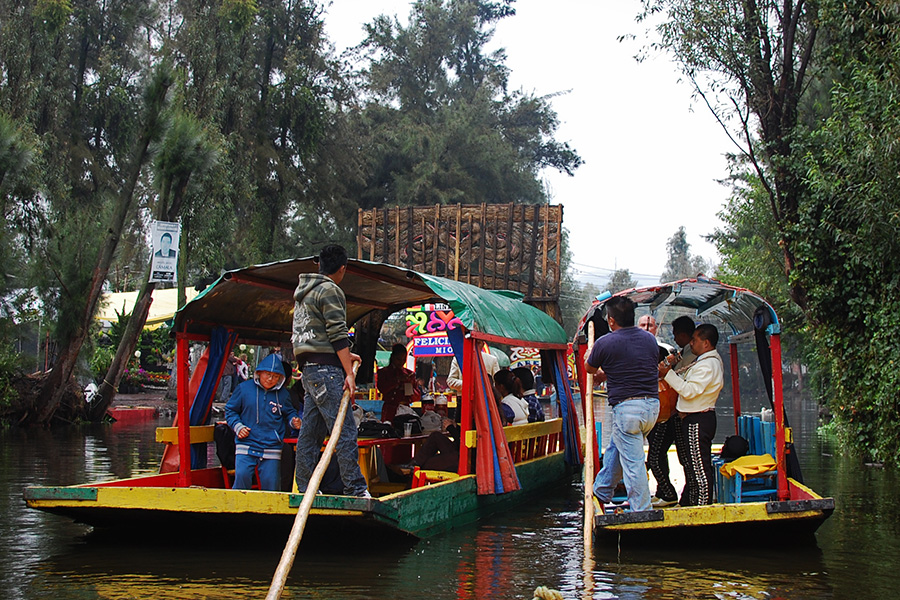
This party boat was celebrating a birthday and sang with the Mariachi

Potato Chips and Candied Apples

F, B and Nik
In addition to the tourist boats, there were smaller vessels carrying mariachi bands, food vendors and chotchke hawkers. They were all super nice, and if you shook your head and smiled, they smiled back and went on to the next group of visitors. The small islands within the canals were also impressive. Many of the trajenera drivers and vendors lived on the islands, and had built modest homes with beautiful gardens and porches. Some of them even built outhouses for the tourists to use for a fee.

A local’s dock
In the end, we were on the water for two hours, drank a beer each, shared two bags of potato chips with hot sauce, floated behind a boat that hired a mariachi band for half an hour (free concert!!), and it cost us 700 pesos (350/hr) + 50 pesos for food ($55 – split four ways). It rained for most of our outing, and we never did make it to the Island of the Dolls. Luckily someone had recreated a small portion of it near our dock!!

Fake Island of the Dolls
Nik and I have been talking a lot about the livability of Mexico City. If we do ever decide to move here, we are taking our families to Xochimilco when they visit.


